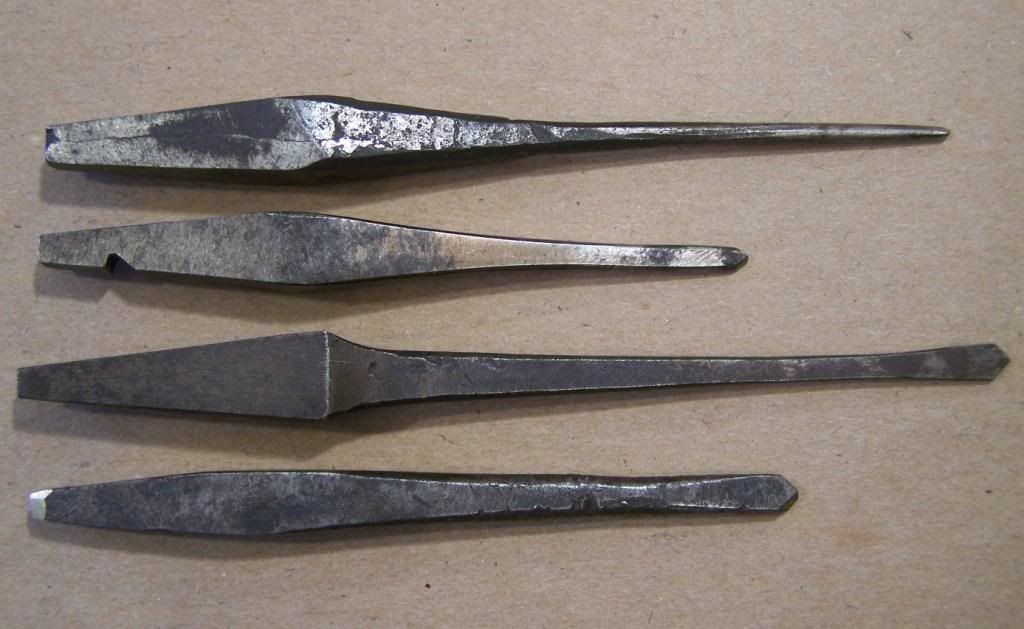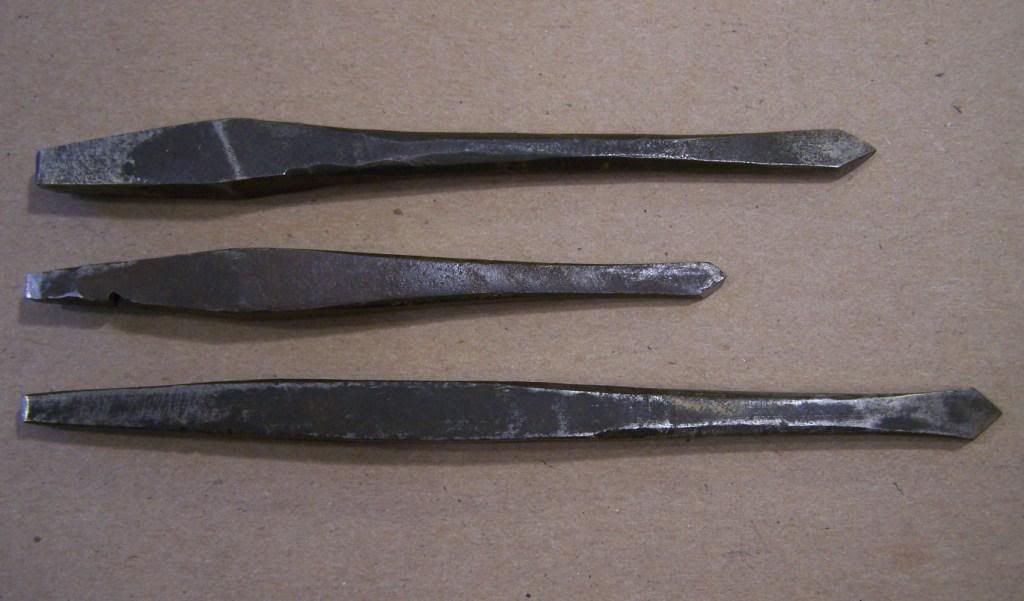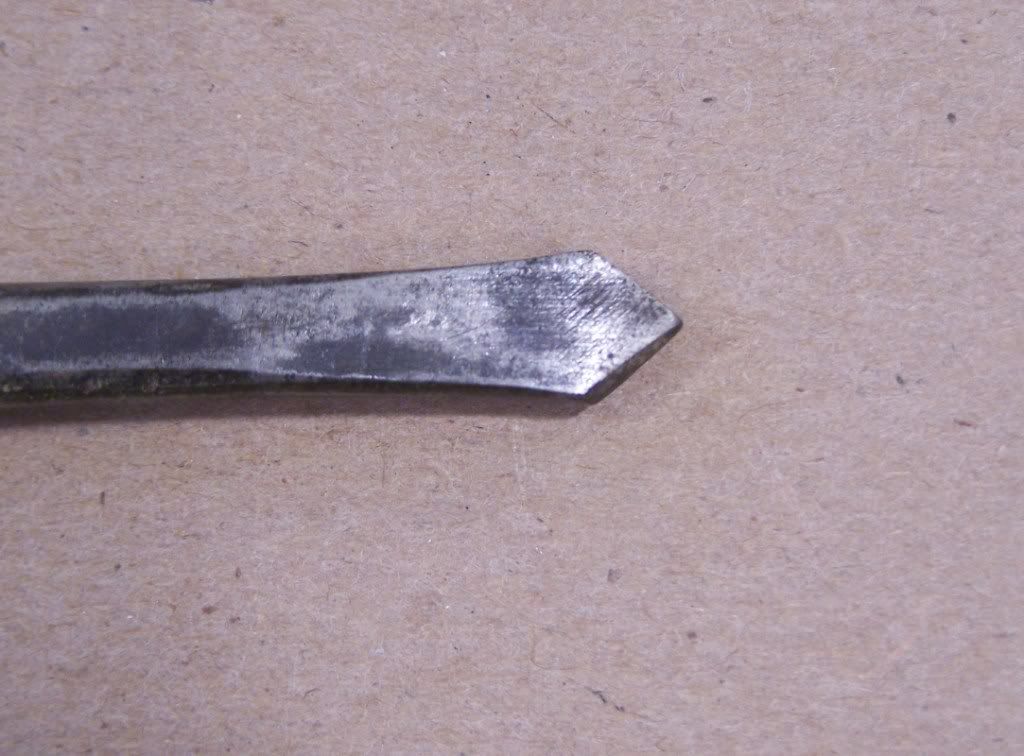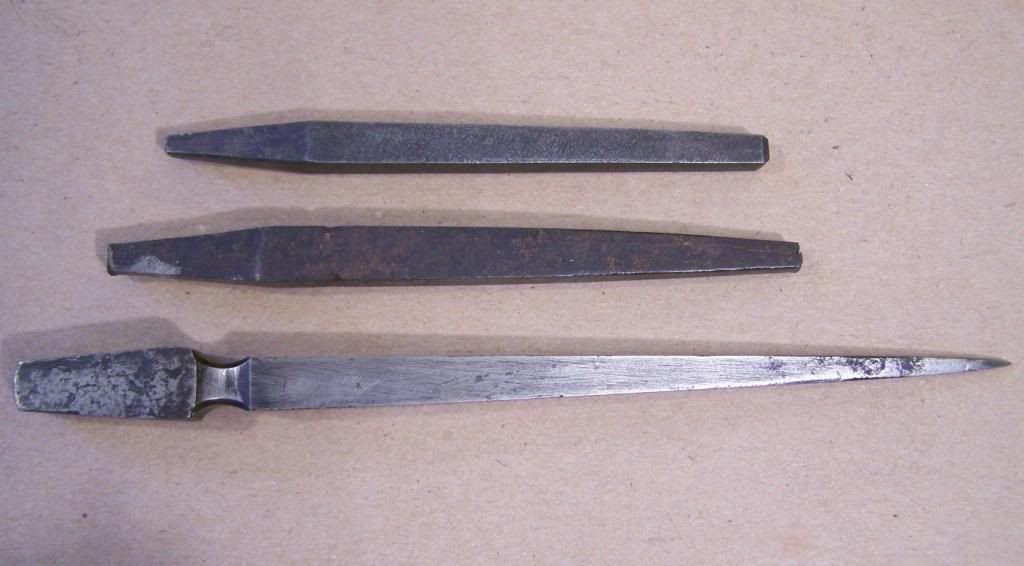Guys,
In the topic of the flashpan grinder the great discussion questions wandered off to the topic of drilling holes in metal in the 18th century. Here is some information on the topic. It is really fabulous to hear from people who really are gunmakers and who wish to understand how guns were made way back then. Twist drill were not used prior 1860.
This discussion will be limited only to metal cutting drill bits that were used with a hand brace. Of course, bow drills were used and the bits were significantly different, but let's save that for a later topic. The bits were spade shaped with a definite fishtail outline. Starting the hole at a punch mark a bit not over 0.1 inch diameter was used. You really cannot use a larger bit for the starting hole as the effort becomes very much to high on a larger bit. Once the initial hole is through, it is followed by one or more larger bits to bring the hole closer to size. In my handmade locks the final hole is 0.147 diameter for a tap to thread 0.174 - 30. Finally a tapered square reamer is used, usually cutting from both top and bottom sides to bring the hole to final size. I use a hand made pin gauge with go - nogo diameters to check the size.
Here are some original metal cutting bits of small diameters with a closeup of the cutting edge, notice the fishtail.


The fishtail shape is important since allowance must be made for the driller to "wobble" the brace during drilling. When I drill, the palm end of the brace probably wobbles by 1/2 inch. This is not on purpose, just I am imperfect - definitely. If the drill bit were to be made with parallel sides, the bit would bind and break.
Here are some slightly larger bits.


Here are some original tapered square reamers for use in a brace. Actually I use a tapered square reamer mounted in a handle like a turnscrew handle for the small holes.

Jim Everett

